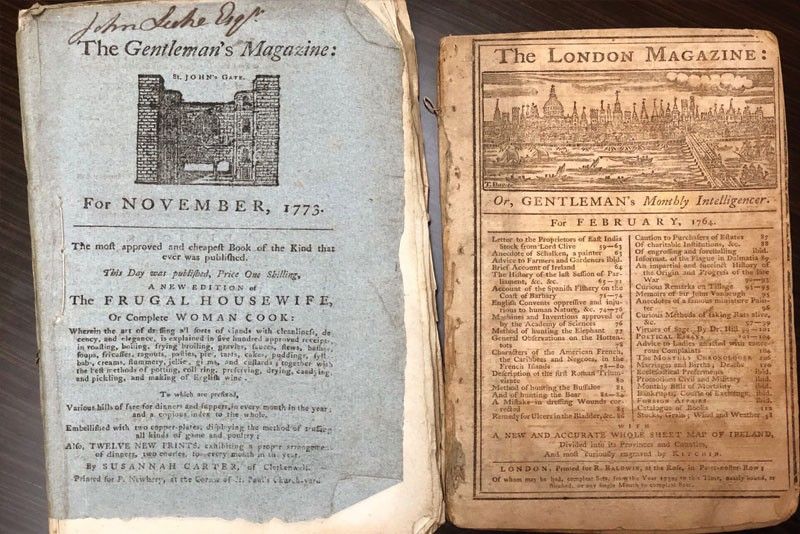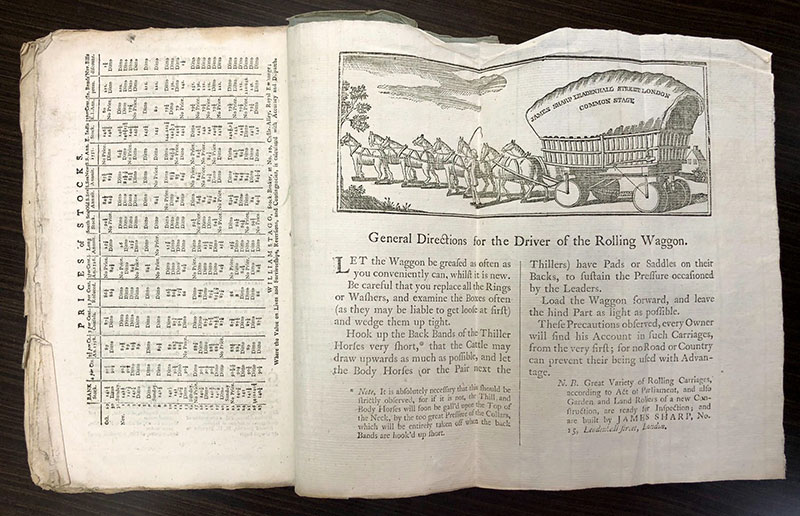Minding the magazine

(To be concluded)
If you collect old books like I do, the chances are that you’ll be picking up more than books as you scour the Web, garage sales, and library throwaways for that elusive first edition or that childhood textbook. I’m referring, of course, to other printed matter such as magazines journals, posters, and maps, but also to manuscripts, letters, and such other ephemera as restaurant receipts, plane tickets, and school report cards (yes, I collect those, too).
Books — especially good ones — tend to exude a certain timelessness about them, maybe because they’re meant to be read beyond the present. They like to lay down general (and, authors like to think, immutable) principles of life, of art and science, of philosophy. The characters of fiction may live in the moment — whether it be in Charles Dickens’ London or William Gibson’s matrix — but the context, implicitly, is forever.
Magazines, on the other hand, are typically meant for no higher purpose than to capture the instant — this week, this month — in all its topical and pictorial variety. When I pick them up, it’s not because they’re going to reveal to me some eternal verity (although that might sometimes happen), but because they’ll show me exactly what people were wearing on June 11, 1898 or what the price of a Parker 51 was in August 1947. Newspapers, of course, can bring everything down almost literally to the very hours and minutes of what eventually becomes history, but magazines have just a bit more of a leisurely sweep, making them ideal for doctors’ and dentists’ waiting rooms, beauty parlors, and barber shops.
It was in a barber shop in Pasig, back in the mid-’60s, that I first got to read about people like Jose Garcia Villa in The Philippines Free Press while getting my head shaved for PMT. I didn’t understand his poetry then (and maybe I still don’t), but I was mighty impressed by what I remember him saying, in so many words: “There’s only one literary genius born every thousand years, and I’m sorry for everyone else, but for these thousand years, that’s me.”
The Free Press and its literary pages became staple reading for me, but I also devoured the Graphic, the Sunday Times Magazine, Life, TIME, Newsweek, National Geographic, and whatever I could get my hands on at the public library (including, away from prying eyes, women’s magazines — and a bit later on in life, magazines with, uhm, women).
These memories came swarming back to me a couple of weeks ago as I received several bound collections of magazines from the 1960s — the Mirror Magazine, the Manila Chronicle Magazine, and Action Now, among others. They’ll join a large pile of Sunday Tribune Magazine issues from the late 1930s and 1940s that I’d acquired more than 20 years ago from a seller who was disposing boxes of them. Sadly, most of them have crumbled (this was before I became more serious about collecting and more organized). While I’ve gently turned away people offering busloads of National Geographic and LIFE (just as I routinely decline offers of family Bibles, law books, and encyclopedias), I’ve sought out samples of historically important or just plain interesting magazines to round out my collection.

A foldout driver’s manual, ca. 1773
One of the reasons I began my antiquarian collection was to be able to show my literature students — in real life, and not just in some Googled picture — what people were reading way back when. For example, when we discuss American literature during the time of the Benjamin Franklin, what would the literate Bostonian or Philadelphian have held in his or her hands?
As it happens, I have the answer to that, thanks to a bit of instruction from my professor in Bibliography back in Wisconsin, Dr. James Kuist, whose type of final exam was to ask us (in those pre-Internet, pre-Google days), “If the year is 1662, and I’m a member of the Royal Society, what books would I likely have on my shelves?” Jim did his doctoral dissertation on the history of one particular publication — indeed, the very first one of its kind to call itself a magazine (derived from the French for “storehouse”) — The Gentleman’s Magazine, founded by a cobbler’s son named Edward Cave in January 1731. It became immensely popular, made Cave (also known by his pen name Sylvanus Urban) a rich man, and was published uninterrupted until 1922.
I pretty much forgot about Dr. Kuist and The Gentleman’s Magazine until recently, when I realized that there were actual copies (not reproductions) available on eBay. The issue I secured comes from November 1773, and is a special issue devoted to “The FRUGAL HOUSEWIFE, Or Complete WOMAN COOK…. including various bills of fare for dinners and suppers, in every month in the year, and a copious index to the whole.” (And before you think otherwise, The Gentleman’s Magazine did not have a centerfold or anything of the sort; it would have been, well, ungentlemanly.)
I was searching for issues ca. 1763-64, which should have had reports on the British occupation of Manila, and I do have two issues of The London Magazine, from September 1763 and February 1764. But while they have gruesome stories about Englishmen being captured and burnt by the Indians (“The blood which flowed from him almost extinguished the fire”), and other reports from the empire, they say nothing about the Philippines.
Next week, we’ll look at two Filipino magazines from August 1913 and April 1949.
* * *
Email me at jose@dalisay.ph. and visit my blog at www.penmanila.ph.


















